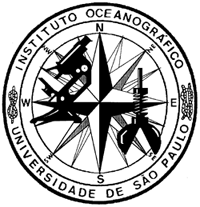This study was performed in the intertidal zone of Barra Velha, Perequê, and Engenho d'Água beaches, located on São Sebastião Island (São Paulo State, Brazil), to assess the composition, abundance, and zonation of the polychaete community in the intertidal zone. Four structurally different sectors were established, two on Barra Velha (I and lI), one on Perequê, and one on Engenho d'Água. Each sector was divided into 3 tidal levels (lower, middle, and upper), in which 5 or 6 random samples were taken seasonally using a corer of 0.01 m2 in area. Laeonereis acuta, Capitella capitata, and Heteromastus filiformis dominated in the upper tidal levels, and Scoloplos (Leodamas) sp. and Cirriformia tentaculata in the lower levels. The structural complexity of Engenho d'Água, caused by rocky fTagments mixed with sand, supported the richest and most diverse polychaete fauna of ali the sectors. The salinity of the interstitial water and the organic matter content were the principal factors related to the zonation patterns at these sites.
Polychaetes; Sandy beaches; Intertidal; Zonation; Macrofauna
